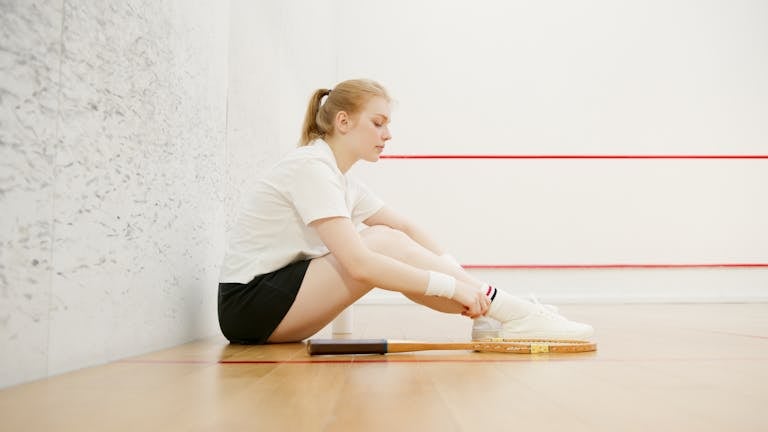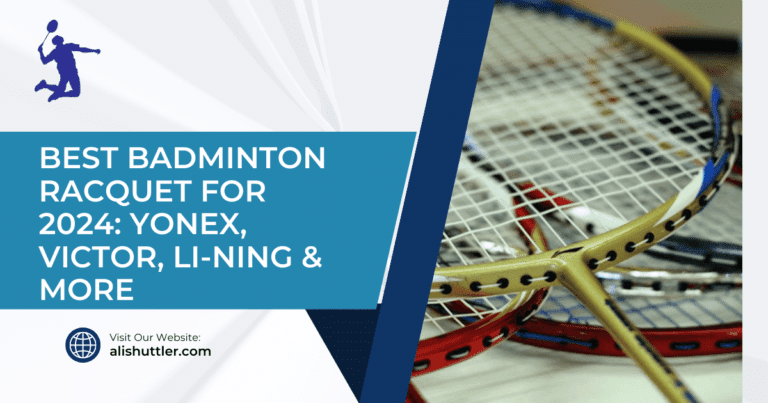Badminton conditioning exercises are great for all players looking to improve strength, speed, and endurance for peak game performance. These routines help develop skills like explosive speed, powerful core and body control, and balance.
Players here in the United States tend to primarily use bodyweight moves, resistance bands, and other basic equipment. That includes jump ropes and cones for their physical training.
Effective conditioning programs integrate exercises such as shuttle runs, lunges, and planks with limited rest intervals. All the coaches emphasize the importance of consistent training to see consistent improvement.
Warm-up and cool-down stretches are typically included in each session. Through the use of specific conditioning exercises, players will be able to react faster, increase their foot speed, and maintain energy levels during even the longest matches.
Here are the best badminton drills and advice for beginners, intermediates, and advanced players.
Why Bother With Badminton Conditioning?
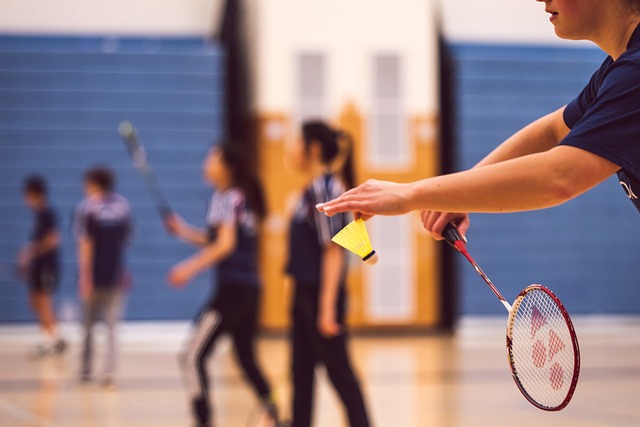
Badminton requires more than just hours spent on the court; a solid badminton fitness routine is essential for anyone aiming to boost their skills and maintain health. An effective badminton training routine includes agility exercises that help players move smoother and react quicker, enabling them to endure in matches that can sometimes extend well beyond the initial game.
Beyond Just Playing: The Fitness Edge
Just playing—even mastering—simply won’t do for would-be elite. The benefits of fitness on court are significant. A well-rounded fitness regimen away from the court ensures obvious benefits in speed, balance, and endurance. Conditioning helps players move around the court more efficiently while maintaining a focused mentality when they’re grinding it out in long rallies.
This edge isn’t only physical! Working out helps you stay more focused. That’s crucial in high-level play, where a millisecond can win or lose a rally. Dedicated conditioning—such as interval runs, core workouts, and plyometrics—creates the foundation necessary for making it on the court at the top level.
Unique Demands of Badminton Fitness
Badminton is still very unique. It requires rapid footwork, sudden changes of direction, and explosive power for attacking smashes. Considering matches can go for hours, aerobic fitness is key. Activities such as cycling or aerobic base runs, 20-40 minutes in duration, can better prepare players to endure longer rallies.
The basis for all explosive moves relies heavily on leg strength and core stability, which can be developed through squats or jump squats. Flexibility plays a big role as well, and yoga or Pilates can assist players in increasing their range of motion and flexibility without injury.
How Conditioning Prevents Common Injuries
From shoulder pain to ankle sprains, injuries are prevalent in badminton. Exercise that develops powerful lower limbs, sturdy knees, and an adaptable spine reduces chances of injury. Warm-ups and cool-downs are equally important as drills, preparing muscles for exertion and reparation to recover quicker.
Regular strength and stretch routines on days without matches help to keep the body safe and ready for play.
Fueling Your Game: Energy Systems
Players rely on both aerobic and anaerobic systems, alternating between a steady-state effort and short, sharp bursts of energy. Well-designed badminton conditioning drills, such as sprints and circuit training exercises, develop both systems effectively. Proper nutrition helps meet these physical demands, providing muscles with the proper fuel to keep them fast and agile.
Essential Badminton Conditioning Exercises
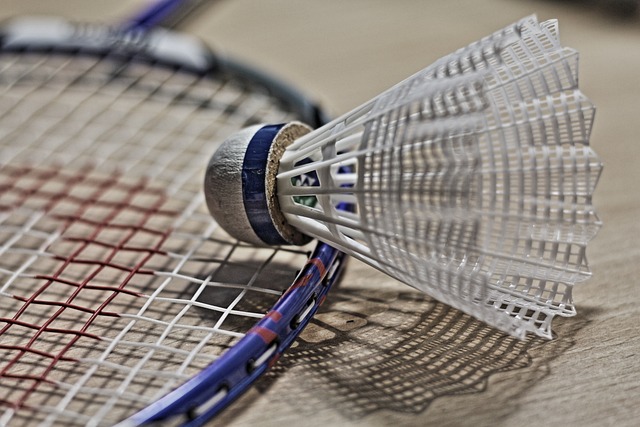
Badminton is a physically demanding sport. Accelerating from a standstill with quick bursts of speed is key. It’s not just about having powerful legs and arms, a rock solid core, or being able to hold out in extended rallies. To meet these demands, a conditioning program should cover all the key aspects of fitness: power, agility, endurance, strength, flexibility, and reaction time.
Circuit training is one of the best ways to do this. It gives coaches the opportunity to focus on all of these areas in a single practice. By combining different exercises and minimizing rest, circuit workouts replicate the fast tempo and intensity of actual competitions. Here, we explain the importance of each pillar of conditioning. We’ve included detailed exercises and tips to get the most out of your conditioning!
1. Build Explosive Lower Body Power
It goes without saying that lower body strength is the foundation for every jump, lunge, and movement on the court. Jump squats are a great, easy to implement exercise to develop lower body power. These exercises target the glutes, quads, and calves, all of which are essential for explosive speed and vertical jumps.
Plyometric drills, such as box jumps and lateral jumps, push this a step further. These drills emphasize developing power for rapid, explosive motions, training the muscles to create strength and speed simultaneously. In addition to these bodyweight exercises, incorporating resistance training—like weighted squats or lunges—is important for increasing muscle mass and allowing for explosive court movement.
Single-leg exercises, such as single-leg squats or bench step-ups, increase the balance component. This exercise not only builds strength but helps to enhance stability—important for those quick, unpredictable changes in direction.
2. Sharpen On-Court Agility Drills
Agility is the secret ingredient that empowers players to move around the court with lightning quickness and razor-sharp precision. Footwork ladder drills are a classic exercise to improve footwork and quickness, getting the feet moving quickly and efficiently.
Cone drills, arranged in zigzags or circles, require tight cuts and fast halts. They replicate the explosive burst required to lunge for a shuttlecock! Shuttle runs can be a great addition in training. They replicate real game movements, particularly when adding side shuffle strides or front and rear court sprints to the court.
Reaction time exercises, like reacting to dropped balls or random cues, help refine the mental-physical connection even more. With consistent practice of these drills, you’ll find that your movement during matches is much more fluid and confident.
3. Boost Endurance for Long Rallies
Endurance is what allows players to remain quick and explosive as the match wears on. Interval training, such as sprinting in quick bursts with brief recovery, is designed specifically for the stop-and-go pace of badminton. Adding something like resistance bands or parachutes cranks it up a notch, too, making each sprint that much more challenging.
Including longer running or cycling sessions once or twice a week will help develop your cardio base. For conditioning endurance to match-like pressure, the best drills are constant rally repetitions. Their emphasis is on getting the shuttle back and forth for predetermined amounts of time.
Monitoring your heart rate with these conditioning exercises enables you to monitor intensity. That’s what makes it so powerful to ensure your training is truly right on target!
4. Develop Rock-Solid Core Stability
A stable core connects the arms and legs, facilitating power on every stroke and movement. These muscles are trained with planks and medicine ball exercises, which build the deep core muscles essential for stability.
Rotational exercises like Russian twists or medicine ball woodchoppers will improve your shot power right away. They are extremely important to improving your touch. For example, balance training yields dividends in maintaining body control during difficult shots.
You can do this by supersetting a lunge on a wobble board or one-legged planks. Strengthening the core is a core component of injury prevention. It protects the lower back and hips from stress.
5. Increase Upper Body Hitting Strength
Strength in the upper body fuels every smash, drive, and block. Pushups and bench presses work the chest, shoulders, and arms, developing a powerful foundation for every shot. Resistance bands are a highly effective form of exercise to increase shoulder rotation.
They improve arm velocity, crucial for powerful racket strokes. Explosive overhead medicine ball throws develop the power needed to execute fierce overhead shots and smashes. For better grip and racket control, add forearm exercises to your conditioning routine.
Give wrist curls or tennis ball squeezes a go — low-tech options that are easy but effective exercises to build power!
6. Enhance Flexibility for Better Reach
Flexibility is one of the most underrated aspects of conditioning, but it plays a crucial role in improving reach and reducing injury risk. Dynamic stretches, performed prior to play, prepare the muscles for movement—imagine leg swings, arm circles, or lunges with rotation.
During cooldown periods, static stretches help maintain healthy muscle flexibility and range of motion, promoting recovery. Targeting the hamstrings, calves, shoulders, and back reaps rewards, as these muscle groups are heavily utilized while playing badminton.
Add in yoga and/or Pilates classes to take it up a notch, developing flexibility and body awareness.
7. Quicken Your Reaction Times
Quick reflexes might just be the thing you need to give you the advantage in a close game. Ball drills, like using a reaction ball that bounces like crazy, help develop hand-eye coordination. Partner drills—such as someone calling out numbers or colors to respond with—get the brain wired and ready.
Plyometric exercises, like speed bounces or jump squats, help you develop those fast-twitch muscles that are essential for split-second responses. Situational drills, in which players react to random shots or signals, complete the training by simulating the real-game duress.
Smart Ways to Train Off-Court

For badminton players, training off the court is a smart way to maximize fitness gains and skill development. This type of training better equips players when faced with challenging matches. It gets them to recover faster and stay ready to act—all with portable gear including racquets, shuttlecocks, and a mat.
Off-court exercises are easily adaptable to any fitness level, so everyone can get involved, from the country club goer to the tournament frequenting athlete.
Balancing Strength, Speed, and Stamina
A smart training strategy balances strength, speed and stamina training. Circuit training is one type that’s efficient and works well for groups. It can combine squats, lunges, jumps, and shuttle runs to develop both power and cardio concurrently.
Pairing in footwork drills such as the side shuffle or lateral shadow steps will help develop speed and agility. Tracking progress, whether through time trials or simple fitness tests, helps players see gains and tweak their routines as needed.
Finding the balance when off-court training is maximized, it produces maximum results while minimizing risk of injury and burnout.
Weaving Conditioning into Skill Practice
Conditioning drills are most effective when combined with skill development. Drills that combine racquet techniques with quick foot movement or match-style tension create a higher quality – and time-efficient – practice.
Implement shuttle runs with fast paced net shots, or include side shuffles into attack-defend rallies. Playing music improves mood, increases energy, and helps hard workouts pass quickly.
Warm-up and cool-down routines besides reducing injury risk, they keep our bodies limber.
Listening to Your Body’s Signals
Understanding when to work hard and when to recuperate is crucial. Players need to be aware of fatigue indicators and take the necessary steps to halt or modify training. Rest days, mindful movement, and hydration make a big difference.
Allowing for ongoing communication between a coach and athlete helps identify issues sooner than later.
Tailoring for Singles vs. Doubles Play
While singles players require the most acute footwork and speed in their training, doubles players should focus more on coordinating with a partner and fast adjustments. You can adjust practice activities to address singles vs. Doubles play.
Incorporate more agility drills for singles play, or emphasize partner movement training for doubles play!
Effective Conditioning Drills Examples
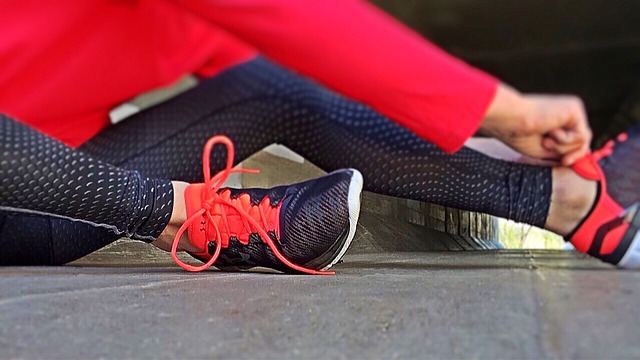
Conditioning for badminton is about more than running laps or hitting the weight room. It combines agility, speed, power, and core strength to keep up with the high tempo of the game. Incorporating varied drills not only makes training exciting and new, but promotes overall strength and conditioning.
All you need for most of these drills are some cones, a jump rope, or a medicine ball. This helps make it simple to get started, no matter if you’re at home, a gym, or a neighborhood court! Whether it’s time, reps, or rounds, the concrete numbers provide easy comparisons to see how much you have improved.
Master Fast Feet Cone Drills
Placing cones in straight lines or hexagon shapes helps develop the precise footwork required to make rapid changes across the court. The Hexagonal Agility Test and diagonal shuffles develop patterns to make players run backwards, sideways, and diagonally. This replicates the type of explosive change of direction needed in game action!
Including lateral defense shadow drills—where you zip back and forth between five shuttlecocks—increases quick reflexes and agility. Having timed drills and someone to coach you or act as a partner makes it possible to improve each step.
Vary Your Jump Rope Routine
Jump rope can be a quick and easy method to increase heart rate level and create foot speed. Take it up a notch by attempting double unders or one-legged jumps. Use jump rope workouts as warm-ups to circuit training workouts.
Keep track of your sets, shooting for 30 to 50 skips. See stamina increase as your enrollments increase.
Practice Specific Shuttle Run Patterns
Shuttle runs are a great way to replicate on-court movement. Set up a series of markers with cones or shuttlecocks and sprint between the markers. Use a mix of short, moderate, and long lengths for added emphasis on both speed and endurance.
Create a competitive element by having teammates race each other. Emphasize footwork fundamentals to minimize ankle injuries.
Use Medicine Balls for Power
Using lightweight medicine balls can help develop that explosive power. Rotational throws are excellent for developing power from the core to the upper body. Partner passing adds an element of entertainment while increasing the level of intensity.
Be sure to maintain proper form in order to remain safe and gain the most benefit from every repetition.
Try Core Strengthening Circuits
An effective core strengthening circuit could combine Russian twists, leg raises, or static “chair” holds into jump squats. Try timed rounds for conditioning. Continue to make progress by increasing the number of reps or adding light weights.
When your core muscles are strong, you have more balance and can move around the court faster.
Customizing Your Conditioning Program
As I said before, a one-size-fits-all approach never works for badminton training. As we all know, each player is different with a different set of strengths, weaknesses, and goals. Customizing a conditioning program means matching the routine to fit where a player stands and where they want to go.
Players should regularly monitor their progress and adjust routines to accommodate skill, schedule, and physical condition changes. By keeping routines dynamic and adaptable, you can keep players engaged and progressing, rather than hitting a plateau or losing motivation. Remember, planning rest days, typically one to two per week, is crucial to allow for recovery and prevent overtraining. Download the PDF below to organize.
Adjusting for Age and Experience
Adjusting for age and experience plays a big role in how a training plan should be structured. Younger athletes, or those new to the game, excel with a consistent routine that reinforces their foundational skills. They work on basic movements such as lunges, squats, and high knees/fast feet.
By beginning at a slow pace and gradually increasing the intensity and difficulty of exercises, you reduce the risk of injury. While more experienced or older athletes can generally tolerate more intense conditioning sessions, they should still prioritize injury prevention through core strength and joint health. Consistent core work—planks, Russian twists, sit-ups—greatly increases power for those big shots, no matter how old you are.
Using Periodization for Peak Performance
Using Periodization for Peak Performance divides your training into distinct phases. This approach allows athletes to increase strength and endurance, then move into a cycle of recovery as they approach major competitions. Regardless of the specific adjustments you make, training volume should decrease approximately 6-8 weeks prior to major events.
This ensures that players will be at their peak when it’s most needed. Feedback from every session, coupled with thoughtful consideration of the competition calendar, informs these changes.
Tracking Fitness Gains Over Time
Keeping track of fitness gains over time is important. Basic logs can track improvements in pace, power, and stamina. Specific, measurable outcomes—such as increased speed on footwork drills or more repetitions—make it easier to identify the successes.
Taking a look at these records highlights where you need to make changes. Tracking accomplishments, such as achieving a personal record on a drill, helps build motivation and momentum.
Injury Prevention Through Smart Conditioning
Smart conditioning influences the way players remain on court and avoid standard injuries. It’s not only about making you work harder, but rather making you work smarter and safer. In badminton, systematic injury preventive training results in improved performance and reduced period of absence.
A comprehensive conditioning program must accommodate badminton’s fast-paced, multidirectional, explosive movements with a focus on agility, power, and muscular endurance.
Never Skip Warm-Ups or Cool-Downs
Warm-ups are essential for safe play. They help prepare your body for activity by increasing blood flow to the muscles and improving joint range of motion. Adding dynamic stretches like arm swings, side lunges, and leg kicks helps prep muscles for sharp moves and cuts on court.
After play, cool-downs involving static stretches, such as hamstring or quad holds, promote muscle recovery and maintain length. This habit improves flexibility and reduces the risk of muscle strains. Scientific studies have demonstrated that structured conditioning programs can reduce pain by more than half for badminton players.
Yes, even programs of three weeks’ duration can develop agility!
Prioritize Correct Exercise Form
It’s important to prioritize correct exercise form over speed or number of reps. Instructors need to look out for negative patterns and provide on-the-spot advice. Immediate feedback fixes these errors before they become problems, particularly in high-intensity interval training (HIIT) or abdominal workouts.
Emphasizing proper form takes care of joints, increases performance, and keeps athletes on the right path. For knee injuries, range of motion low-intensity exercises such as slow, controlled quad stretches or eccentric training allow players to rehabilitate while not overstressing joints.
Recognize and Avoid Overtraining
Being able to rest is just as important as being able to push. Overtraining results in lackluster performance and more significant injuries. Rest days, tracking training loads, and frank discussions with coaches about fatigue allow players to recuperate.
Increased core strength and the incorporation of interval training not only enhance performance but reduce the likelihood of injury. Smart rest used in combination with ice and compression for acute problems such as Achilles tendinopathy helps players stay healthy and on the field.
Keep Your Conditioning Engaging
Ensuring that badminton conditioning remains interesting and engaging will be an important part of ensuring sustained growth for the future. A combination of fresh drills, small competitive challenges built into their training, and camaraderie among their group could help training feel less monotonous.
When athletes are excited about training, they work harder, improve faster and develop a stronger attachment to their sport.
Add Variety to Your Workouts
Changing up your exercises helps you stay focused, both mentally and physically. Incorporating dynamic stretching prior to sessions warms up muscles and shocks the system to keep muscles from getting too bored.
Take burpees or lunges, for example—coaches in Los Angeles tend to love compound moves that target multiple muscle groups. New outdoor runs or workouts in the park switch things up—taking in some fresh air works wonders to energize and revitalize.
Whether it’s running, swimming or cycling—experimenting with different forms of cross-training helps to avoid plateaus and creates overall better physical conditioning. Tech tools or apps can help track progress and recommend new routines, helping maintain a high level of engagement.
Incorporating shuttle runs, ladder drills, or HIIT workouts further develops agility and quickness while maintaining a high heart rate.
Find a Training Buddy Motivation
Finding a training buddy helps increase accountability. Pairing up allows partners to bring in new drills, such as two-at-a-time footwork drills or mini-competitions.
These workouts become very social and enjoyable. These friendships turned rivalries motivate athletes beyond what anyone thought possible. Group sessions allow all members to share their experiences and advice.
Changing partners often helps to bring new perspectives. Supportive community creates a culture of belonging. This motivates athletes to commit to the program and take themselves to the next level week after week.
Celebrate Small Fitness Victories
Making progress—whether it’s a few seconds off a shuttle run or an increased plank time—helps build confidence. Tangible small goals, like successfully completing a new drill or increasing agility, help keep everyone focused.
Don’t overlook small victories. Sharing these wins, no matter how small, boosts team morale and shows players that incremental progress is what matters most. Frequent group check-ins and collective support, accountability, and encouragement keep the training environment uplifting and focused.
Conclusion
Solid badminton conditioning has you feeling sharp, quick, and steady on your feet. Basic exercises such as shuttle runs and footwork ladders develop agility and stability. Combine on-court drills with bodyweight exercises or a jump rope to keep workouts challenging and exciting. Whether kids hitting LA gyms, college athletes, or weekend warriors—everyone benefits from intelligent training with targeted goals. Making small changes to routines prevents monotony and keeps the muscles engaged to build and maintain strength.
Consistent on-court drills and a bit of off-court conditioning translates to shorter times missed with ankle sprains. Badminton becomes increasingly enjoyable the better you move, and the longer you’re able to last in games. To up your game, incorporate some of these conditioning exercises into your next workout. These small steps each week add up to measurable impact.
Frequently Asked Questions
What are the best conditioning exercises for badminton players in the US?
Put together a mix of cardio, agility exercises, and strength training for your badminton fitness routine. Shuttle runs, jump rope, squats, and lunges are among the best badminton exercises to increase speed, stamina, and sudden bursts of movement necessary to dominate on American courts.
How often should I do badminton conditioning workouts?
How often should I do badminton conditioning workouts? Aim for 2–3 sessions per week of effective badminton conditioning drills. Just make sure to balance them with skill practice and rest days, allowing for consistent progress in your badminton fitness routine while minimizing the potential for burnout or injury.
Can conditioning exercises help prevent injuries in badminton?
Yes. Consistent badminton conditioning drills condition the body, strengthen important muscle groups, increase flexibility, and improve joint stability. This enhances your overall fitness and reduces your chances of sustaining frequent badminton injuries such as these sprains and strains.
What off-court exercises benefit badminton players most?
Incorporate badminton exercises such as interval running, resistance band workouts, and core strength training into your fitness badminton routine. These develop endurance and power, crucial for badminton players, even off the court.
How do I customize a badminton conditioning program?
Consider both your current state of conditioning and how you like to play, incorporating an effective badminton fitness routine. Afterwards, combine cardiovascular, agility exercises, and strength exercises, adjusting intensity and frequency based on your competitive goals and college coach schedule.
What’s a quick drill I can use to improve badminton footwork at home?
Create an agility ladder using tape, or set up cones or markers in your living room or driveway. Once you have the hang of it, incorporate agility exercises such as 10–15 minutes of side-to-side shuffles and forward-backward sprints to enhance your badminton fitness routine and increase your court movement speed.
How can I keep badminton conditioning fun and engaging?
Make things fun and interesting by trying a group workout or different badminton training exercises, or pumping up the music. Bring in an element of competition by challenging friends or tracking personal bests to keep your badminton fitness routine engaging.


